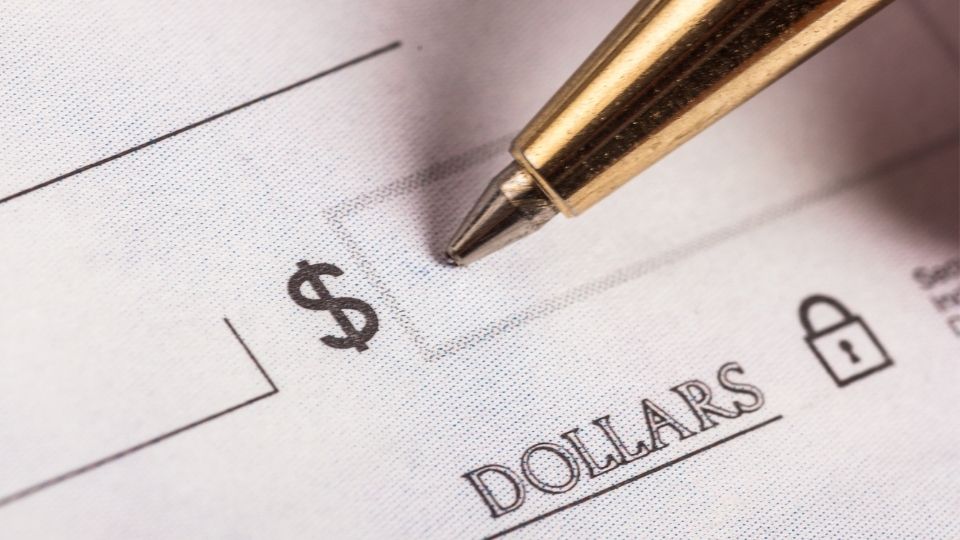How to Write a Check Properly
Even with mobile payments, credit or debit cards and online purchasing, a check still has its place. With checks, you promptly have a paper trail of your purchases and transactions. Establishments may tack service charges, convenience fees or minimum purchase requirements onto card payments. Hackers may have a more difficult, but not necessarily impossible, time with checks as opposed to cards.
Knowing how to write a check helps you enjoy these and other benefits of check writing. The tips below can also steer you clear of the risks of legal trouble and falling victim to fraud that come with not carefully writing checks.
- Check Your Balance

Know how much you have in your account. Presenting a check with insufficient funds in your account to cover it can subject you to a civil lawsuit or even a criminal prosecution if you wrote the check knowing you did not have enough to cover it. Depending on your state, the person to whom you wrote the check can get attorney fees, civil penalties or extra damages beyond the face value of the check.
To have an accurate account balance, you start (not end) with the current balance as reported by your bank. From that starting point, subtract any checks, purchases or withdrawals that do not appear on your account or otherwise have not been posted. If you haven’t already, register for online access to your bank account to get current information on what has been posted.
To reduce the risk of an overdraft, avoid adding back any promised or anticipated deposits or credits that have not posted. That is, do not assume you have that money available for a check until it appears in the account.
- Know the Check Writing Policy
Increasingly, retailers have declined payments by check. Cash, credit cards or debit cards typically are safer from the perspective of the business. Prosecuting or collecting from bad check writers consumes the time of businesses or their employees having to appear in court. For gas stations and convenience stores especially, those presenting bad checks may be difficult or impossible to find. If you’re paying court costs or fines, you will need cash, credit cards, debit cards, cashier’s check or certified bank check.
If the business takes checks, have a photo identification card handy to present.
- Make Sure You Have Time to Pay By Check
Know the deadlines for payment so you will mail the check in time. If a payee, such as the Internal Revenue Service or your state tax office, considers payment timely if postmarked by the deadline, writing a check should not create many complications.
However, a time crunch may be more likely if the payee requires that payment be received by a particular date. You might find yourself in default of an agreement if the mail is delayed or you do not deposit the mail in time.
- Avoid Starter Checks
Your checks must have your name, address and driver’s license number and state of issuance. Many retailers will not take starter checks.
Many banks and large retailers offer check printing services where you can order checks with the name, address and driver’s license numbers. Software or online apps allow you to print your own checks using check or heavy-stock paper you can buy for a few dollars.
Whether you use a service or a check printing app, you can enter your name, address, driver’s license number and phone number. The routing number appears as a set of bottom-left numbers. The bank account number that you enter is on the bottom-right. You will also enter a check number to start the book or series of checks.
- Write With Ink, Not Lead
Pencils have erasers. When you write with pencils, your words and numbers can be erased.
Thwart would-be cheats by using ink. Avoid markers which might bleed through to the back of the check. Consider using blue ink so that you can tell the original of a check from a photocopy. High-quality copiers might make it challenging for you to tell between an original black-inked signature and the copy.
- Proceed Cautiously If You Post-Date a Check
Generally, you put down the date you write the check. However, there might be some reasons you do not use that date. The turn of a new year causes many check writers to put the wrong year. This reflects the habit of writing the prior year on checks during the previous year. It may take you a few days to realize that you’re in a different year.
Many check writers intentionally place a future date on a check. You may have pondered (or are pondering) a post-dated check because you anticipate that you don’t have enough in your account to cover the check when you write it. At least in theory, the future date represents when you think your bank account can cover the check.
Post-dating comes with risks. The vendor might worry about your ability to pay. The seller might immediately cash the check despite your request. If so and you don’t have sufficient funds in the bank, you will still have to make good on the purchase price. If you don’t satisfy the check within a certain number of days, you could face prosecution for writing a bad check.
- Identify the Payee Correctly

On the “Pay to the Order of” Line, you enter the person whom you are paying. You can find this information on the invoice or bill that you’re paying. If you don’t see it, call the business and get the correct payee name. If you’re paying in person, ask the sales associate or receptionist if you are not sure. Some business will have a stamp for the payee. Make sure you witness the stamping of the right payee.
To reduce the chance of check fraud, do not part ways with a check with the “Pay to the Order of” space blank. You might become a victim of fraud also by writing “CASH” on that line should someone appropriate your check to his or her own use.
- Write the Amount In Numbers and Words, Both Correctly and Legibly.
Below the “Pay to the Order of” space, you have a line to write out alphabetically the amount of the check. By way of illustration, you should write $123.06 as “One Hundred Twenty-Three Dollars and 06/100 Cents.” Note that the numbers between twenty-one (21) and ninety-nine (99) are hyphenated. The cents portion is written as a fraction of the number of cents (preceded by “0”) over 100.
Learning how to write a check means being legible, especially with numbers. Sometimes, yours “1s” may look like “7s.” The way you write numbers could confuse the recipient of your check or a bank. In case of a conflict or confusion, what you put in words controls as the amount of the check over what appears numerically.
To further prevent alteration of the amount, write the first digit to the far left of the box for the numerical amount of the check. Enter the remaining digits as large as possible and avoid spaces. If your check has a whole amount, such as “$100,” add a decimal and two zeros to the right of the decimal. This prevents your $100” check from becoming “$1,000,” $10,000” or worse.
- Use the Memo to Say Why the Check is Written
Using a check for payment readily creates a document to support accounting activities, tax deductions and your side in a legal dispute that might involve payment. The memo line, while optional, gives a check strong evidentiary support for these and other purposes.
If you’re paying an invoice, write the invoice number and a brief description of the goods or services. For rent, record the month for which you are paying. To document insurance premiums, place the policy number and type of insurance (for instance, life or automobile) on the memo line. Should you write a check to a religious organization or charity, include on the memo line the purpose of the check. This may be a tithe, building project or fundraising effort or drive.
- Sign the Check

The signature should represent your last entry on the check. If you sign before you enter things, you open yourself to a fraud artist who can appropriate your check and bank account to their own devices.
Be consistent when you sign a check. That includes the same or similar style and use of your name. You can opt for your first, last and middle name; your first and last name; or your first name, middle initial and last name. Using different names or signature styles can undermine a forgery claim on your part.
Sign in cursive. A printed name on the signature line can ease the tasks of forgery artists.
For business or organizational checks, indicate your capacity when you sign. Next to your name on the signature, state whether you are “President,” “Vice-President,” “Manager” or “Agent.” These and similar designations on the signature line show that the organization rather than you are responsible for the underlying invoice, debt or contract.
- “Void” and Destroy a Check You Write in Error
If you write the payee, date or amount in error, you may find it easier to just start over. Whenever you notice your mistake or that you don’t want to pay, don’t complete the check. Write “VOID” in large, all-capital letters (especially if you have completed the check). When you return home, tear or shred the check. If you don’t have a shredder, consider placing the pieces you tear in different trash cans in your home.
Should you run low on or out of checks, correction may be your only option. If so, don’t go for the white-out. Instead, cross out with a straight line the mistake, put your initials over it and enter the correct information. Those initials make your check less suspicious.
- Record the Transaction in Your Register
The art of writing a check goes beyond the check itself. Financial problems abound when your check register overstates the true balance of your account.
Make it a habit to record every check, withdrawal and purchase as it happens (or as soon as possible thereafter). Your check register has a column for the check number, date you write the check, the payee and the amount. Double check your math.
You might want to keep a spreadsheet or use an app for entering your checks and other transactions involving your account. Computer-based registers do not make addition or subtraction mistakes, provided you enter the information correctly. You also have more space to record the purpose of the check, such as food, insurance, utilities or charities.
- Verify That Your Check Has Cleared
Chances are that you put your check in the mail. Check writing and mailing comes with the risk that your payment does not reach its destination. This is especially if the business or governmental agency treats payment as made when received.
At some point before the due date, see if your check has cleared. With online banking, you can see both the entry and the image of the check.
If the check has not cleared, contact the payee to see if your check has been received. Should you become concerned that it is lost in the mail or went to the wrong place, ask the bank to stop payment. Before you do, tell the payee that you are doing so and that you will write another check.

